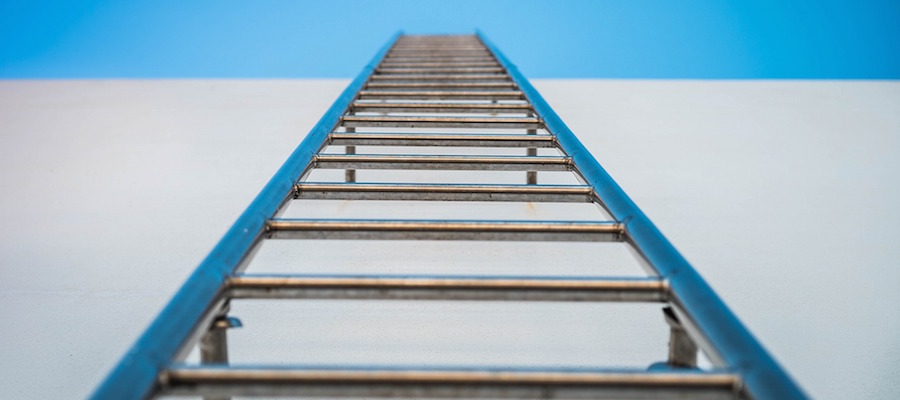Book review – The broken ladder: How inequality affects the way we think, live and die

The following is a review of The Broken Ladder: How Inequality Affects the Way We Think, Live, and Die by Keith Payne, published by Viking in May 2017.
In 2016 Oxfam made the almost unbelievable announcement that the richest 62 people in the world had as much wealth as the poorest half of the global population.
That was then. In 2017 a new Oxfam report showed that things had changed—for the worse. Today just eight people are worth as much as the poorest 3.6 billion people.
It’s not easy to put that contrast into perspective, but consider that those eight rich people could easily fit into one of their private jets, while the entire population of North, Central and South America is only about one billion—in other words, those eight have more wealth than three times the number of people in this entire hemisphere.
Never has there been such inequality in the world.
Today just eight people have as much wealth as the poorest 3.6 billion people.
Poverty is horrible enough. To cite just one example: UNICEF estimates that almost six million children under the age of five died in 2015—approximately 11 children every single minute.
Poverty plus inequality is even worse, as Keith Payne shows in his important book, The Broken Ladder: How Inequality Affects the Way We Think, Live, and Die.
Payne, a professor of psychology at the University of North Carolina, begins by showing how we (and our primate cousins) are hard-wired to react to perceptions of relative status and inequality. Next, he cites many studies which explore what’s known as the “fundamental attribution error”—in this case, assuming that another person’s successes and failures are mostly their own doing.
“The college graduate is smart. The drug addict is weak willed. The person shopping with food stamps is lazy. One reason it is so prevalent is that it is simply easier to think about people than situations.”
This problem was dramatically revealed in Phillip Zimbardo’s (in)famous Stanford Prison Experiment, in which college students were randomly assigned to be either “guards” or “inmates” in a pretend jail. The experiment had to end early because normal young people were so negatively affected by their roles in this oppressive situation: the “guards” became brutal and even sadistic, while the “prisoners” were traumatized.
As Payne underlines, most attitudes and actions are, most of the time, “shaped by particular situations” rather than by individual disposition. Moreover, most of the time we not only have very little control of situations, we have almost no control over our thoughts and feelings—99% of which are unconscious to begin with.
He notes that “emotion can be even more powerful than thoughts” and he documents how the constant psychological stress of problems such as poverty, racism and inequality can cause one’s body to get stuck in fight-or-flight mode “for weeks, months or years”—a very unhealthy state which can lead to inflammation, heart attacks and many other dangerous medical conditions.
A dramatic example of the power of unequal situations was shown in the Whitehall study of British civil servants. There is a very clear hierarchy of power, so much so that “even the difference between the highest-status government officials and those just one rung below was linked to increased mortality” (as well as more medical problems, disease, and so on). These differences exist even though all of the subjects “have decent government jobs and the salaries, health insurance, pensions and other benefits that are associated with them”.
The developed countries with the most economic equality have fewer health and social problems.
The unhealthy consequences of inequality hold true around the world. For example, Payne cites findings from The Spirit Level: Why Equality Is Better for Everyone (authored by Richard Wilkinson and Kate Pickett), which indicate that those developed countries that have the most economic equality (e.g. Japan, Sweden and Norway) have fewer health and social problems when compared with those with the greatest inequality—and it is the United States that both has the most inequality and is the most unhealthy of all.
In fact, The Lancet just published a new study by Wilkinson and Pickett which concluded:
“For at least 40 years, research evidence has been accumulating that societies with larger income differences between rich and poor tend to have worse health and higher homicide rates. More recently, this has been contextualized by findings that more unequal societies not only have higher rates of poor health and violence, but also of other outcomes that tend to be worse lower down the social ladder, including teenage births, lower math and literacy scores, obesity and imprisonment.”
Regarding such income inequality, Payne mentions that, in 2012, the average CEO in the US “earned” about 350 times the average worker’s income. Attempts to justify such disparities are usually based on the claim that these executives add more value to their corporations than regular workers. Does that mean that these CEOs work 350 times harder than average, or are 350 times smarter?
Apparently neither: “In one comprehensive analysis of thousands of corporations over nearly two decades…only about 5 percent of the performance differences…could be attributed to the CEO.”
Aside from a few ideological biases (e.g. the author believes that countries like the USSR and China were “communist”), The Broken Ladder is filled with valuable social, psychological and economic insights that ought to be shared widely to help people understand the injustice of rampant inequality and deal with the legion of problems that it brings.
Topics: Poverty, inequality & welfare


